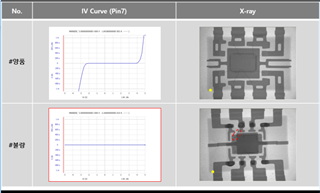Dear Support,
KIndly help me on the part number OPA627BP (DC:1931+, COO: Malaysia)
Based on X ray, found wire bonding and lead frame design is different. Kindly help to check and confirm if this is valid and normal.
Please refer to photo for reference. Thanks.


